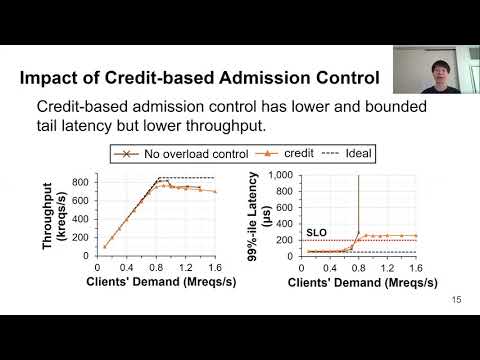Description:
Explore a conference talk on overload control for microsecond-scale Remote Procedure Calls (RPCs) using Breakwater. Learn about the challenges of maintaining high request throughputs and low tail latency in modern datacenter applications composed of numerous microservices. Discover how Breakwater, a novel server-driven admission control scheme, prevents overload in microsecond-scale services by issuing credits based on server-side queueing delay. Understand techniques such as demand speculation, piggybacking of client-side demand information, and active queue management for handling load bursts. Compare Breakwater's performance to other approaches like DAGOR and SEDA, and see how it achieves stable performance within 20 ms during unexpected demand spikes. Gain insights into the implementation details, benefits, and evaluation results of this innovative overload control scheme designed for high-performance datacenter environments.

Overload Control for µs-scale RPCs with Breakwater
Add to list
#Conference Talks
#OSDI (Operating Systems Design and Implementation)
#Programming
#Cloud Computing
#Microservices